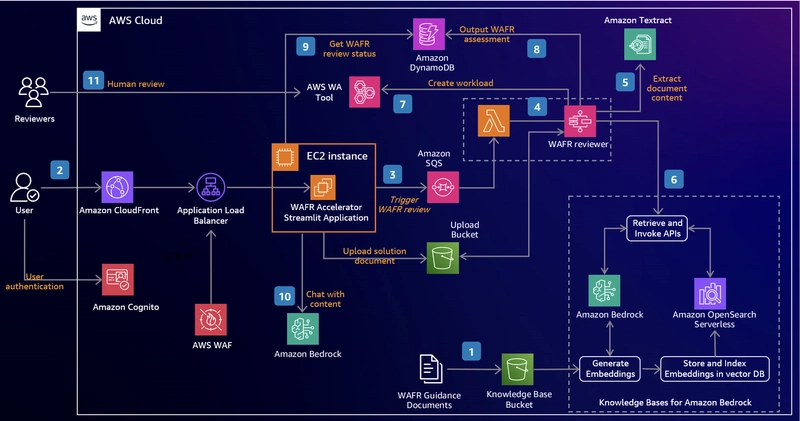Understanding Different Types of Software Tests
Testing is the backbone of reliable software development. Whether you’re building a small script or a complex system, tests help you catch problems early, document intent, and build confidence in your code. This article breaks down the main types of software tests, explains key concepts like mocks and spies, and offers practical advice for building a robust testing strategy. Why Testing Matters: A Quick Story Ever fixed a bug, only to realize a different feature broke as a result? Or spent hours debugging a complex workflow that worked yesterday? A good test suite is your safety net, catching problems before they reach your users and giving you confidence to move fast without breaking things. 1. Unit Tests: The Foundation of Quality What are Unit Tests? Unit tests check individual pieces of code—usually functions or methods—in isolation. Like a quality check on each part before assembly. Why Write Unit Tests? Catch bugs early, close to where they’re introduced. Make refactoring safer and faster. Provide living documentation for your code’s behavior. Example: Testing a sum(a, b) function for various inputs and edge cases. # Python example with pytest from mymath import sum def test_sum(): assert sum(2, 3) == 5 assert sum(-1, 1) == 0 Best Practices: Keep tests small and focused. Avoid external dependencies (like databases or APIs). Run them frequently—ideally on every code change. Common Pitfalls: Over-mocking or testing trivial code. Ignoring test failures. Tools: Python: pytest, unittest JavaScript: Jest, Mocha 2. Integration Tests: Ensuring Components Work Together What are Integration Tests? Integration tests verify that different modules or services in your application interact correctly. Like testing the plumbing and wiring after building a house. Why Write Integration Tests? Catch issues in how components communicate or share data. Validate workflows that span multiple units. Example: Testing a user registration process that involves saving to a database and sending a welcome email. // JavaScript example with supertest and Jest const request = require('supertest'); const app = require('../app'); test('registers a new user and sends welcome email', async () => { const res = await request(app).post('/register').send({ email: 'test@example.com', password: 'pass' }); expect(res.statusCode).toBe(201); // Assume email service is mocked }); Best Practices: Use realistic data and scenarios. Isolate external systems with mocks or test doubles when possible. Focus on key interactions, not every possible path. Common Pitfalls: Making tests too broad or slow. Not cleaning up test data. Tools: Python: pytest (with fixtures), nose2 JavaScript: Jest, Mocha (with supertest) 3. End-to-End (E2E) Tests: Simulating Real User Journeys What are E2E Tests? E2E tests simulate real user actions by testing the entire system—from the UI through APIs to the database and back. Why Write E2E Tests? Validate that the whole application works as intended. Catch issues that only appear in real-world scenarios. Example: Automating a browser to fill out and submit a signup form, then verifying the user appears in the system. // Example with Cypress cy.visit('/signup'); cy.get('input[name=email]').type('user@example.com'); cy.get('input[name=password]').type('securepassword'); cy.get('button[type=submit]').click(); cy.contains('Welcome, user@example.com'); Best Practices: Focus on critical user journeys (signup, checkout, etc.). Keep E2E tests stable and maintainable—avoid testing minor UI details. Run E2E tests in a production-like environment. Common Pitfalls: Over-relying on E2E tests (they’re slow and brittle). Not isolating test data. Tools: Cypress Selenium Playwright 4. Other Testing Types Functional Tests Validate specific features or user stories, regardless of implementation. Ensure the application delivers expected value to users. Smoke Tests Quick checks to verify that the most important parts of the system work after deployment or major changes. Like flipping the main switch to see if the lights come on. Regression Tests Ensure that new changes don’t break existing features. Often automated and run as part of continuous integration (CI) pipelines. Performance Tests Assess how your system behaves under load (speed, scalability, stability). Tools: JMeter, Locust, k6 Mocks, Spies, and Stubs: Tools for Isolated Testing When testing, you often want to isolate the code under test from external dependencies or side effects. Here’s how: Mocks: Fake objects that replace real ones, allowing you to control their behavior and verify usage. For example, you can mock an API call to return a specific response during testing. Spies: Functions or objects that record information about how they were called

Testing is the backbone of reliable software development. Whether you’re building a small script or a complex system, tests help you catch problems early, document intent, and build confidence in your code. This article breaks down the main types of software tests, explains key concepts like mocks and spies, and offers practical advice for building a robust testing strategy.
Why Testing Matters: A Quick Story
Ever fixed a bug, only to realize a different feature broke as a result? Or spent hours debugging a complex workflow that worked yesterday? A good test suite is your safety net, catching problems before they reach your users and giving you confidence to move fast without breaking things.
1. Unit Tests: The Foundation of Quality
What are Unit Tests?
Unit tests check individual pieces of code—usually functions or methods—in isolation. Like a quality check on each part before assembly.
Why Write Unit Tests?
- Catch bugs early, close to where they’re introduced.
- Make refactoring safer and faster.
- Provide living documentation for your code’s behavior.
Example:
Testing a sum(a, b) function for various inputs and edge cases.
# Python example with pytest
from mymath import sum
def test_sum():
assert sum(2, 3) == 5
assert sum(-1, 1) == 0
Best Practices:
- Keep tests small and focused.
- Avoid external dependencies (like databases or APIs).
- Run them frequently—ideally on every code change.
Common Pitfalls:
- Over-mocking or testing trivial code.
- Ignoring test failures.
Tools:
- Python:
pytest,unittest - JavaScript:
Jest,Mocha
2. Integration Tests: Ensuring Components Work Together
What are Integration Tests?
Integration tests verify that different modules or services in your application interact correctly. Like testing the plumbing and wiring after building a house.
Why Write Integration Tests?
- Catch issues in how components communicate or share data.
- Validate workflows that span multiple units.
Example:
Testing a user registration process that involves saving to a database and sending a welcome email.
// JavaScript example with supertest and Jest
const request = require('supertest');
const app = require('../app');
test('registers a new user and sends welcome email', async () => {
const res = await request(app).post('/register').send({ email: 'test@example.com', password: 'pass' });
expect(res.statusCode).toBe(201);
// Assume email service is mocked
});
Best Practices:
- Use realistic data and scenarios.
- Isolate external systems with mocks or test doubles when possible.
- Focus on key interactions, not every possible path.
Common Pitfalls:
- Making tests too broad or slow.
- Not cleaning up test data.
Tools:
- Python:
pytest(with fixtures),nose2 - JavaScript:
Jest,Mocha(withsupertest)
3. End-to-End (E2E) Tests: Simulating Real User Journeys
What are E2E Tests?
E2E tests simulate real user actions by testing the entire system—from the UI through APIs to the database and back.
Why Write E2E Tests?
- Validate that the whole application works as intended.
- Catch issues that only appear in real-world scenarios.
Example:
Automating a browser to fill out and submit a signup form, then verifying the user appears in the system.
// Example with Cypress
cy.visit('/signup');
cy.get('input[name=email]').type('user@example.com');
cy.get('input[name=password]').type('securepassword');
cy.get('button[type=submit]').click();
cy.contains('Welcome, user@example.com');
Best Practices:
- Focus on critical user journeys (signup, checkout, etc.).
- Keep E2E tests stable and maintainable—avoid testing minor UI details.
- Run E2E tests in a production-like environment.
Common Pitfalls:
- Over-relying on E2E tests (they’re slow and brittle).
- Not isolating test data.
Tools:
- Cypress
- Selenium
- Playwright
4. Other Testing Types
Functional Tests
- Validate specific features or user stories, regardless of implementation.
- Ensure the application delivers expected value to users.
Smoke Tests
- Quick checks to verify that the most important parts of the system work after deployment or major changes.
- Like flipping the main switch to see if the lights come on.
Regression Tests
- Ensure that new changes don’t break existing features.
- Often automated and run as part of continuous integration (CI) pipelines.
Performance Tests
- Assess how your system behaves under load (speed, scalability, stability).
- Tools: JMeter, Locust, k6
Mocks, Spies, and Stubs: Tools for Isolated Testing
When testing, you often want to isolate the code under test from external dependencies or side effects. Here’s how:
- Mocks: Fake objects that replace real ones, allowing you to control their behavior and verify usage. For example, you can mock an API call to return a specific response during testing.
- Spies: Functions or objects that record information about how they were called—useful for verifying that certain interactions happened (e.g., a function was called with the correct arguments).
- Stubs: Provide pre-programmed responses to function calls, letting you simulate different scenarios or edge cases (like a database returning an error).
Example:
// Jest spy example
const sendEmail = jest.fn();
sendEmail('hello@example.com');
expect(sendEmail).toHaveBeenCalledWith('hello@example.com');
Why Use These Tools?
- Make tests faster and more reliable by removing dependencies on external systems.
- Focus tests on the logic you care about.
- Test error handling and edge cases that are hard to reproduce otherwise.
Common Pitfalls:
- Overusing mocks, leading to tests that don’t reflect real-world behavior.
- Forgetting to reset or clean up mocks between tests.
BDD: Behavior-Driven Development
Behavior-Driven Development (BDD) is about writing tests that describe the behavior of your application in plain language, making them readable and accessible to everyone on the team.
Example:
Feature: User Login
Scenario: Successful login
Given a registered user
When they enter correct credentials
Then they see the dashboard
Benefits:
- Improved communication between developers, testers, and stakeholders.
- Tests double as documentation.
Tools:
- Cucumber (JS, Ruby)
- Behave (Python)
- Jasmine (JS, with BDD style)
Test Pyramid: Striking the Right Balance
A healthy test suite is like a pyramid:
- Base: Lots of fast, reliable unit tests.
- Middle: Fewer, broader integration tests.
- Top: A handful of end-to-end tests for critical user flows.
This approach keeps feedback fast and maintenance manageable.
Common Pitfalls and Anti-Patterns
- Too many slow E2E tests: They slow down feedback and are hard to maintain.
- Not maintaining tests: Outdated or flaky tests erode trust.
- Testing implementation, not behavior: Leads to brittle tests that break with refactoring.
- Ignoring test failures: Undermines the value of your safety net.
Summary Table
| Test Type | Purpose | Scope | Speed | Reliability | Typical Tools |
|---|---|---|---|---|---|
| Unit | Test individual units | Single unit | Fast | High | pytest, Jest |
| Integration | Test connections | Modules | Medium | Medium | pytest, supertest |
| End-to-End | Test user journeys | Whole app | Slow | Lower | Cypress, Selenium |
| Smoke | Quick health check | Critical path | Fast | Medium | Various |
| Regression | Prevent old bugs | Varies | Varies | High | Various |
| Performance | Assess system limits | Whole app | Slow | N/A | JMeter, Locust, k6 |
Conclusion
A strong testing strategy combines these types of tests. Start with a foundation of unit tests, add integration tests for confidence in your architecture, and use E2E tests for real user flows. Use mocks, spies, and stubs to keep tests focused and maintainable, and consider BDD for better collaboration and clarity. Aim for a balanced test pyramid to keep your codebase robust and your team productive.
Reflect: What’s the most valuable test you’ve written? How do you balance speed and coverage in your own projects?
Further Reading & Resources:











































































![Apple Developing Battery Case for iPhone 17 Air Amid Battery Life Concerns [Report]](https://www.iclarified.com/images/news/97208/97208/97208-640.jpg)
![Apple to Split iPhone Launches Across Fall and Spring in Major Shakeup [Report]](https://www.iclarified.com/images/news/97211/97211/97211-640.jpg)
![Apple to Move Camera to Top Left, Hide Face ID Under Display in iPhone 18 Pro Redesign [Report]](https://www.iclarified.com/images/news/97212/97212/97212-640.jpg)
![AirPods 4 On Sale for $99 [Lowest Price Ever]](https://www.iclarified.com/images/news/97206/97206/97206-640.jpg)












































































































_Inge_Johnsson-Alamy.jpg?width=1280&auto=webp&quality=80&disable=upscale#)



























































































































![[The AI Show Episode 145]: OpenAI Releases o3 and o4-mini, AI Is Causing “Quiet Layoffs,” Executive Order on Youth AI Education & GPT-4o’s Controversial Update](https://www.marketingaiinstitute.com/hubfs/ep%20145%20cover.png)































































































































































![From Art School Drop-out to Microsoft Engineer with Shashi Lo [Podcast #170]](https://cdn.hashnode.com/res/hashnode/image/upload/v1746203291209/439bf16b-c820-4fe8-b69e-94d80533b2df.png?#)

![[FREE EBOOKS] Learn Computer Forensics — 2nd edition, AI and Business Rule Engines for Excel Power Users & Four More Best Selling Titles](https://www.javacodegeeks.com/wp-content/uploads/2012/12/jcg-logo.jpg)



































































































